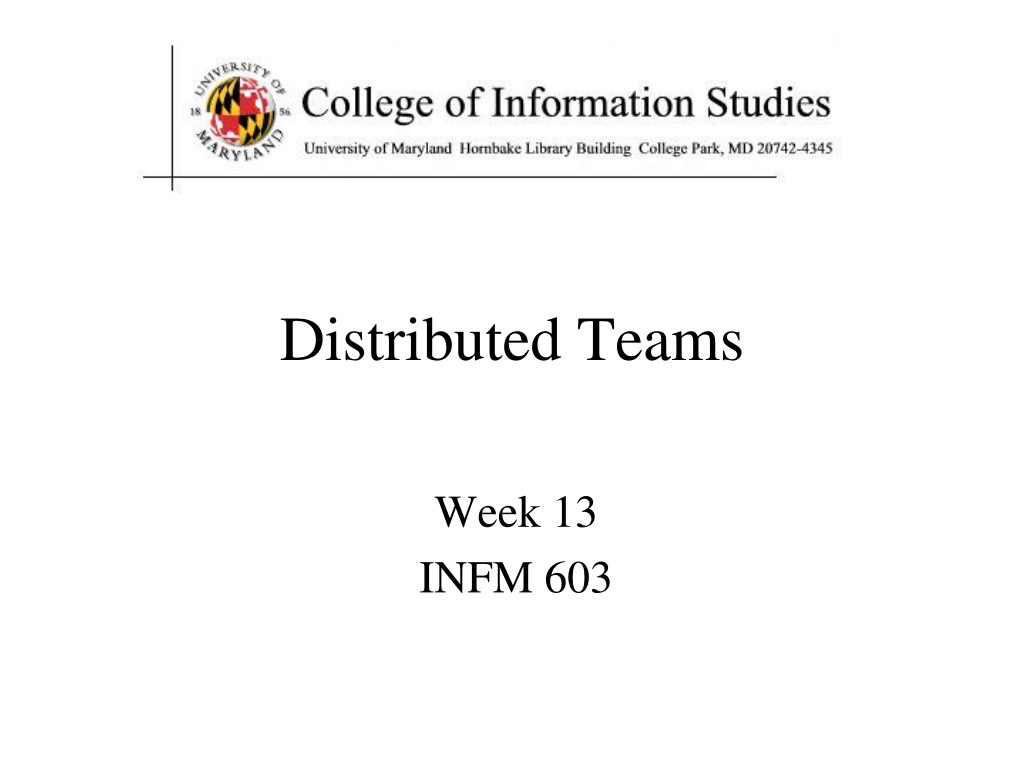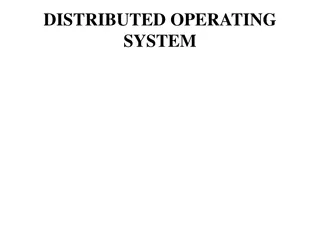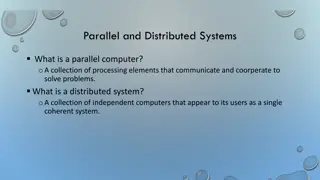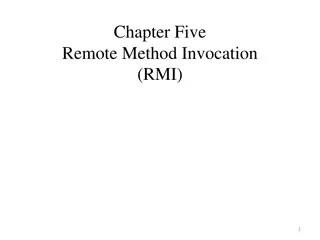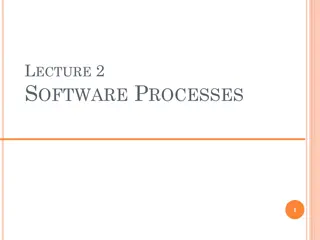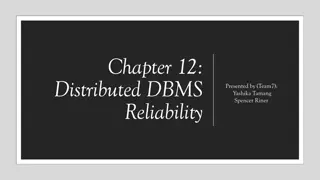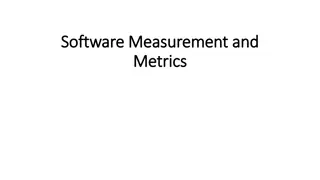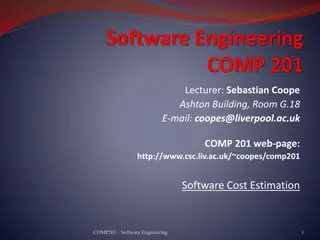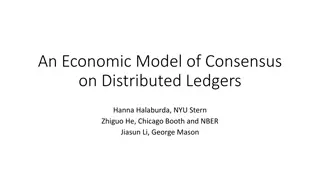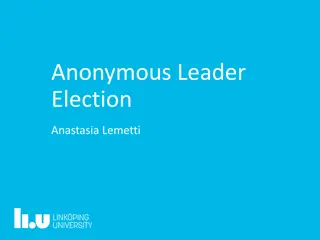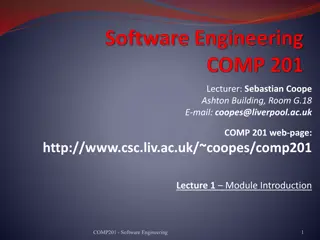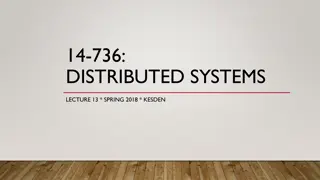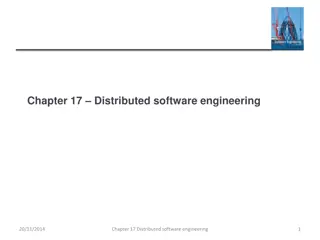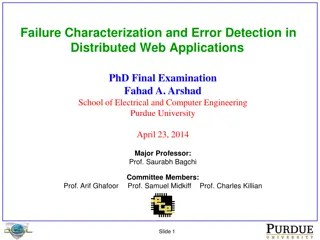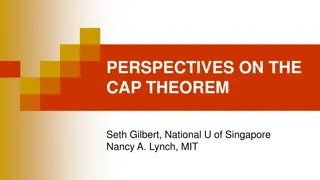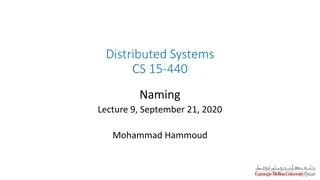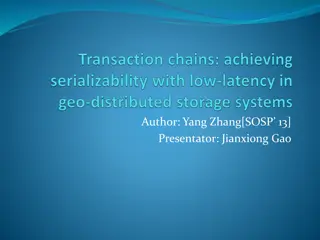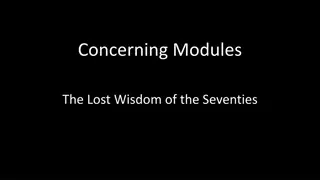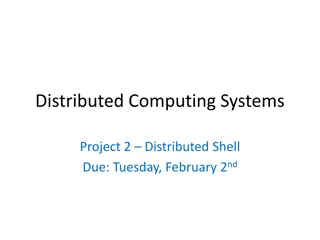Managing Distributed Teams in Global Software Development
Explore the strategic choices, barriers, and solutions in global software development, including methodologies like Extreme Programming and the pros and cons of open source. Learn about total cost of ownership factors and how to navigate challenges in distributed team projects.
Download Presentation

Please find below an Image/Link to download the presentation.
The content on the website is provided AS IS for your information and personal use only. It may not be sold, licensed, or shared on other websites without obtaining consent from the author. Download presentation by click this link. If you encounter any issues during the download, it is possible that the publisher has removed the file from their server.
E N D
Presentation Transcript
Distributed Teams Week 13 INFM 603
Agenda Distributed teams Project presentation prep Final exam prep
Strategic Choices Acquisition Proprietary ( COTS ) Open source Implementation Integrate Best-of-breed systems One-off custom solution
Global Software Development Barriers Geographic distance Temporal distance Linguistic & cultural distance Fear and trust Organizational structure Process Infrastructure Project Architecture Solutions Cultural ambassadors Configuration management Face to face kickoffs Modularity Well defined interfaces Effective handoffs Win-win strategies
Extreme Programming Planning game Customer involvement Coding standards Simplicity of design Pair programming Continuous integration Refactoring Small functional releases Collective ownership Sustainable pacing Metaphor
Open Source Pros More eyes fewer bugs Iterative releases rapid bug fixes Rich community more ideas Coders, testers, debuggers, users Distributed by developers truth in advertising Open data formats Easier integration Standardized licenses
Open Source Cons Communities require incentives Much open source development is underwritten Developers are calling the shots Can result in feature explosion Proliferation of orphans Diffused accountability Who would you sue? Fragmentation Forking may lead to competing versions Little control over schedule
Total Cost of Ownership Planning Installation Facilities, hardware, software, integration, migration, disruption Training System staff, operations staff, end users Operations System staff, support contracts, outages, recovery,
Open Source Business Models Support Sellers Sell distribution, branding, and after-sale services. Loss Leader Give away the software to make a market for proprietary software. Widget Frosting If you re in the hardware business, giving away software doesn t hurt. Accessorizing Sell accessories: books, compatible hardware, complete systems with pre-installed software
Project Presentations Maximum of 25 minutes Goals (from the user s perspective) Demo Task division between partners Most interesting implementation details Complete list of limitations Lessons learned Project process improvement (optional)
Final Exam 2 hours Starts at 6:00 sharp (be early) Ends at 8:00 sharp Take it anywhere Classroom will be available Ask me questions by email or phone Open everything But no communication with any other person Available from the Web and by email Submitted to me by email
Unified Modeling Language Real systems are more complex than anyone can comprehend Key idea: Progressive refinement Carve the problem into pieces Carve each piece into smaller pieces When the pieces are small enough, code them UML provides a formalism for doing this But it does not provide the process
Unified Modeling Language File:UML diagrams overview.svg
Specifying Structure Capturing the big picture Use case diagram (interactions with the world) Narrative Scenarios (examples to provoke thinking) Designing the object structure Class diagram ( entity-relationship diagram) Object diagram (used to show examples)
Specifying Behavior Represent a candidate workflow Activity diagram (a flowchart ) Represent object interactions for a scenario Collaboration diagram (object-based depiction) Sequence diagram (time-based depiction) Represent event-object interactions Statechart diagram (a finite state machine )
Use Case Design Use Case Diagram Input-output behavior Use Case Narrative Explains each use case Use Case Scenario Activity diagram shows how the use cases are used together
Use Case Diagram File:UML Use Case diagram.svg
Use Case Diagram External actors Roles of people Types of systems Use cases Top-level functions (solid arrows to/from actors) Relationships among use cases Always-depends-on (dashed <<include>>) Sometimes-is-depended-on (dashed <<extend>>) Inherits-from (solid triangle-arrow)
Activity Diagram: Modeling Decisions [lowPriority] Open Incident Allocate Resources [fire & highPriority] [not fire & highPriority] Notify Fire Chief Notify Police Chief Thanks to Satish Mishra
Sequence Diagram ECDSH's main web page Detailed info page Seacrh engine Database :User Time input search criteria search songs/disks by criteria Activation sumbit verify return display pick up a disk Message see detailed info load page search det. info sumbit verify return display Thanks to Satish Mishra
Good Uses for UML Focusing your attention Design from the outside in Representing partial understanding Says what you know, silent otherwise Validate that understanding Structuring communication with stakeholders
Avoiding UML Pitfalls Don t sweat the notation too much The key is to be clear about what you mean! Don t try to make massive conceptual leaps Leverage encapsulation to support abstraction Don t get to attached to your first design Goal is to find weaknesses in your understanding
